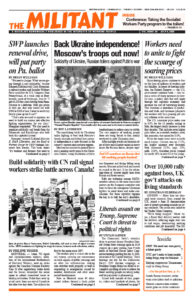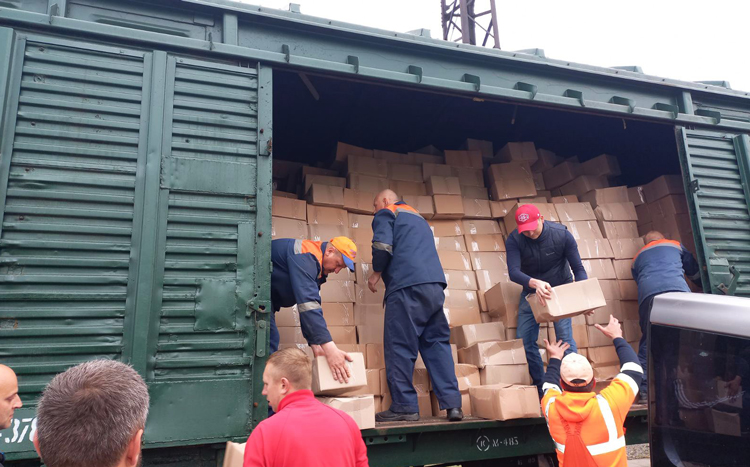“We are called the iron people,” train driver Yurii Yelisieiev, 42, told the June 16 Wall Street Journal. He was referring to Ukrainian rail workers, who, as part of the resistance to Moscow’s war, have kept this vital freight and passenger service running. Dubbed the country’s “second army,” its passenger stations and rail bridges, its substations and workshops, are a prime target of Russian attacks. At least 165 rail workers have been killed, over 250 injured and five captured by Moscow’s invading forces.
The rail system is the biggest state-owned enterprise in Ukraine, with some 230,000 workers. It has transported everything from evacuating civilians to essential supplies, above, including grain exports and incoming weaponry.
For weeks after the invasion, Yelisieiev drove evacuation trains from Kharkiv, a city under attack near the Russian border, first to Kyiv and then to the relative safety of Lviv. Panicked civilians crowded aboard with mothers passing toddlers through train windows, “afraid the children would be trampled,” he said. Up to 3,000 people crammed onto trains that usually carried 600.
Anastasia Tregub, 24, fled Kyiv in early March. “It was very scary to be on that train,” she said, but the staff kept passengers calm. She needed “a person to talk with because I was alone,” she recalls. Every Ukrainian passenger train has a steward who answers passengers’ questions and deals with any problems that come up. One steward “talked to me all the time, as much as I needed,” Tregub said. The railway workers, she says, “are our angels. They rescued and helped a lot of people.”
Rail workers have ferried some 3.8 million people to safety, a million of whom were children, as well as some 120,000 pets.


